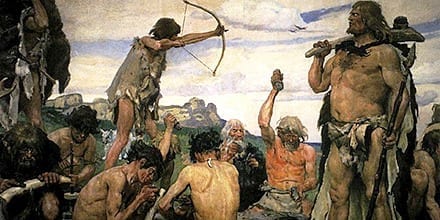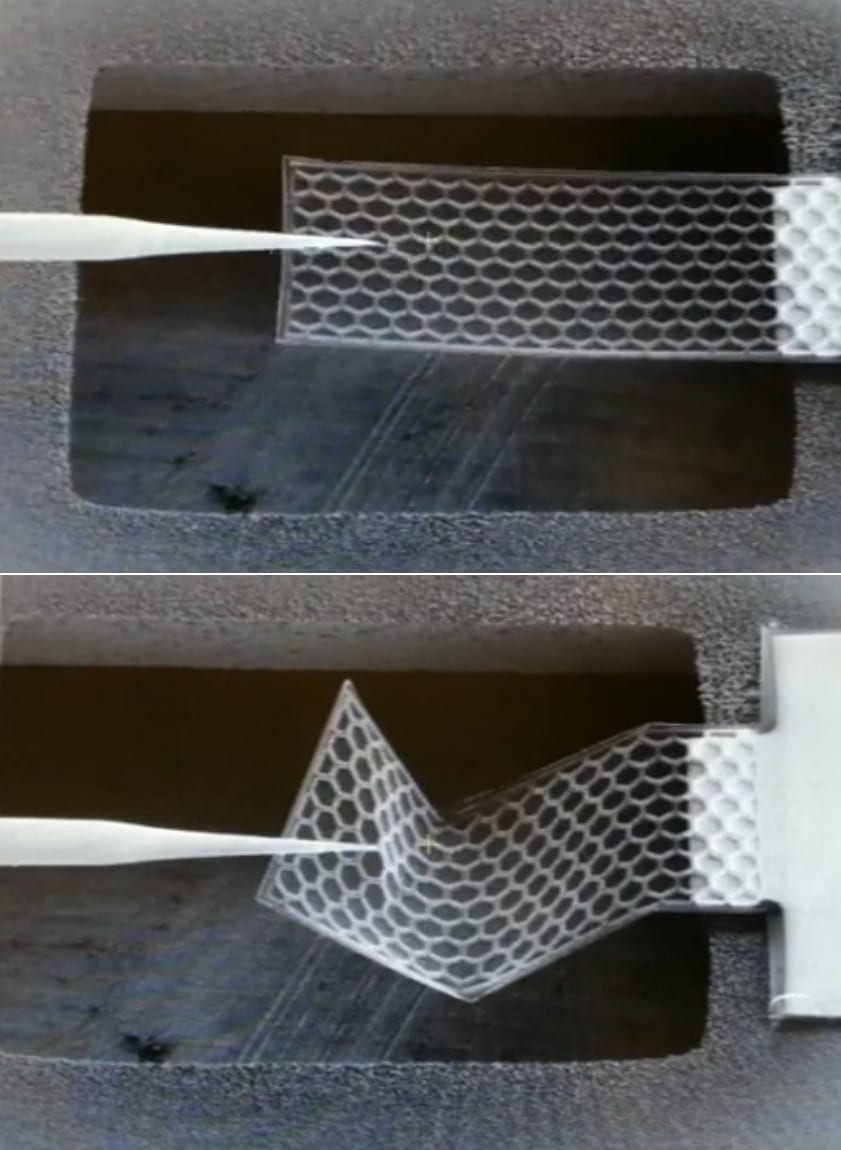
Human beings inherit many genetic traits directly from their parents. However, cultural traits — tools, beliefs and behaviors that are transmitted by learning — can be passed on not only by parents but also teachers and peers. Many animals have learned behaviors, but people are uniquely good at building on existing knowledge to innovate further. This capacity, known as cumulative culture, was captured by Sir Isaac Newton when he said, “If I have seen further, it is by standing on the shoulders of giants.”
We can see evidence of this cumulative culture in the archaeological record; over time, there’s an accelerating increase in the number of tools people use. But the archaeological record reveals another pattern, too: there’s also evidence for large-scale losses of culture. For example, archaeological excavation suggests that Aboriginal populations in Tasmania lost numerous technologies over time, including nets, bone tools and warm clothing, even though these tools might still have been useful.
And it doesn’t seem like cultural accumulation just proceeds through time at a regular pace. The archaeological record shows some evidence of large bursts of innovation occurring after relatively long periods of little change. For example, the early human archaeological record is composed primarily of stone tools for approximately two million years. Then, from about 60,000 to 30,000 years ago, archaeologists find a burst of creative activity, such as burial sites, art forms including cave paintings and statues, and engraved bone and antler tools.
The process of change in the frequency and distribution of cultural traits over time is known as cultural evolution. But what drives it? Why would the inventory of tools expand at some times and diminish at others? These are questions that have intrigued archaeologists for decades. We propose a new model we think addresses some aspects of how cultural evolution happens — and, crucially, it’s based on the idea that not all innovations occur in the same way.
Modeling how culture advances
Since it’s not possible (or ethical) to experimentally manipulate large groups of people, scientists make mathematical models to try to understand how cultural traits evolve. A model of this kind is a set of rules that describe mechanisms that may underlie the process we’re interested in.
For example, a model of cultural evolution could use equations to describe the rate at which individuals invent new things, transmit their knowledge and learn from others. These equations would depend on a number of parameters — things like population size and the rates of invention and learning.
A model can be explored analytically, by calculating what patterns the set of equations predicts, or it could be explored using computer simulations. In our research, we did both.
Most of the models of cultural evolution study the spread of technologies and behaviors that already exist in a population. In our recent PNAS paper, coauthored with Stanford’s Marcus Feldman, we introduce a new model of cultural evolution. What’s different about our model is quite simple: we don’t assume all human innovations are created in the same way.
Watching our model’s predictions unfold
Working with a model is kind of like playing a scientifically minded game of The Sims. On the computer, we simulate a human population of a certain size. We set the rules for a number of interdependent innovation processes to occur at different rates. For example, inventions that can be viewed as “strokes of genius” may be rare, while the invention of tools that are versions of existing ones might be more frequent.
Read more: Why Does Culture Sometimes Evolve via Sudden Bursts of Innovation? A New Model
The Latest on: Cultural Evolution
[google_news title=”” keyword=”Cultural Evolution” num_posts=”10″ blurb_length=”0″ show_thumb=”left”]
via Google News
The Latest on: Cultural Evolution
- The Art of Sukkot and its Cultural Evolutionon April 18, 2024 at 8:59 am
In the contemporary world, community art projects around Sukkot are common, where groups come together to build and decorate sukkahs in creative ways, often with a focus on ecological or social themes ...
- Why Creativity Is Distinct From Individual Learningon April 11, 2024 at 5:00 pm
create a gigantic "cultural evolution map" showing how each innovation took root in earlier ones.) To trace all the "cultural ancestors" of each invention or artwork is unachievable because ...
- Humans have been speaking for a lot longer than we originally thoughton March 20, 2024 at 2:56 am
New research has pinpointed the likely time in prehistory when humans first began to speak. Analysis by British archaeologist Steven Mithen suggests that early humans first developed rudimentary ...
- Is there a typical rate of cultural evolution?on February 7, 2024 at 9:54 am
Are cultural evolution rates similar across human societies? The emerging field of Cliodynamics uses mathematical models to study history. Tobias Wand and colleagues used a data-driven approach to ...
- Did Fireside Tales Aid Social and Cultural Evolution?on November 11, 2023 at 7:09 am
Wiessner suggests that imaginative firelight activities spurred the cultural and social evolution of human ancestors. “We can’t tell about the past from the Bushmen. But these people live from ...
- Cultural Evolutionon August 13, 2023 at 12:36 pm
In this book, Kate Distin proposes a theory of cultural evolution and shows how it can help us to understand the origin and development of human culture. Distin introduces the concept that humans ...
- How Humans Are Shaping Our Own Evolutionon January 14, 2023 at 12:08 am
Evolution of human traitsIcons depict cultural and biological milestones in human evolution. Álvaro Valiño Evolution is relentless; when the chance of survival can be increased, it finds a way ...
- Kick Game Evolution - NBA sneaker culture in 2019on January 26, 2022 at 11:57 pm
Meet three players who have embraced the sneaker culture evolution. Every week, PJ Tucker spots a pair of sneakers he wants. He'll track down his size 14 -- often within days -- then almost ...
- How can our culture affect the characteristics we inherit?on January 17, 2022 at 4:00 pm
We live in a world where we’ve already solved many problems culturally rather than genetically. Image: Figure 2 from "Cultural Evolution of Genetic Heritability" by Ryutaro Uchiyama, Rachel Spicer and ...
via Bing News









